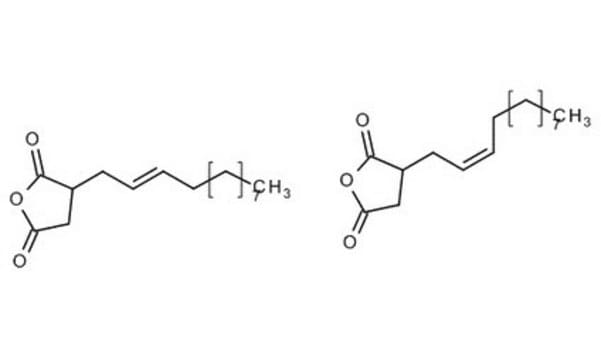381276
Silica Inorganic Sorbent
120-140 mesh, 99.8%
Synonyme(s) :
Silica, fumed, Silica, Silicic anhydride, Silicon dioxide, Silicon dioxide amorphous
About This Item
Produits recommandés
product name
Silica, 99.8%
Qualité
standard
Pureté
99.8%
Forme
powder
Technique(s)
LPLC: suitable
Superficie
175-225 m2/g
Matrice
Silica
Groupe de la matrice active
silica
Taille des particules
0.011 μm
Dimension de pores
60 Å mean pore size
Technique de séparation
hydrophilic interaction (HILIC)
Chaîne SMILES
O=[Si]=O
InChI
1S/O2Si/c1-3-2
Clé InChI
VYPSYNLAJGMNEJ-UHFFFAOYSA-N
Vous recherchez des produits similaires ? Visite Guide de comparaison des produits
Catégories apparentées
Description générale
a. Quartz: = 1143K
b. Tridymite: 1143 - 1743K
c. Cristobalite: = 1743, over 1973K it forms amorphous vitreous silica glass.
Application
Caractéristiques et avantages
Autres remarques
Code de la classe de stockage
13 - Non Combustible Solids
Classe de danger pour l'eau (WGK)
WGK 2
Point d'éclair (°F)
Not applicable
Point d'éclair (°C)
Not applicable
Équipement de protection individuelle
Eyeshields, Gloves, type N95 (US)
Certificats d'analyse (COA)
Recherchez un Certificats d'analyse (COA) en saisissant le numéro de lot du produit. Les numéros de lot figurent sur l'étiquette du produit après les mots "Lot" ou "Batch".
Déjà en possession de ce produit ?
Retrouvez la documentation relative aux produits que vous avez récemment achetés dans la Bibliothèque de documents.
Les clients ont également consulté
Articles
Operation principle and market dominance of single crystalline silicon solar cells.
Notre équipe de scientifiques dispose d'une expérience dans tous les secteurs de la recherche, notamment en sciences de la vie, science des matériaux, synthèse chimique, chromatographie, analyse et dans de nombreux autres domaines..
Contacter notre Service technique



